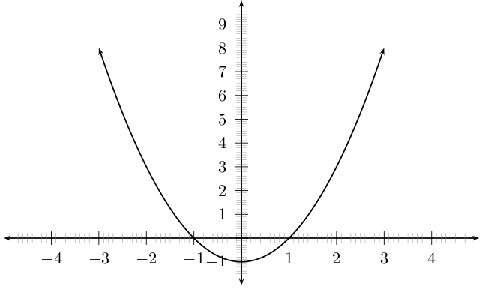| << Chapter < Page | Chapter >> Page > |
The general shape and position of the graph of the function of the form , called a parabola, is shown in [link] . These are parabolic functions.

Complete the following table of values for the functions to to help with drawing the required graphs in this activity:
This simulation allows you to visualise the effect of changing a and q. Note that in this simulation q = c. Also an extra term bx has been added in. You can leave bx as 0, or you can also see what effect this has on the graph.
Phet simulation for graphing
From your graphs, you should have found that affects whether the graph makes a smile or a frown. If , the graph makes a frown and if then the graph makes a smile. This is shown in [link] .

You should have also found that the value of affects whether the turning point is to the left of the -axis ( ) or to the right of the -axis ( ).
These different properties are summarised in [link] .
 |
 | |
 |
 |
For , the domain is because there is no value of for which is undefined.
The range of depends on whether the value for is positive or negative. We will consider these two cases separately.
If then we have:
This tells us that for all values of , is always greater than . Therefore if , the range of is .
Similarly, it can be shown that if that the range of is . This is left as an exercise.
For example, the domain of is because there is no value of for which is undefined. The range of can be calculated as follows:
Therefore the range is .
For functions of the form, , the details of calculating the intercepts with the and axis is given.
The -intercept is calculated as follows:
For example, the -intercept of is given by setting to get:
The -intercepts are calculated as follows:
However, [link] is only valid if which means that either or . This is consistent with what we expect, since if and then is negative and in this case the graph lies above the -axis and therefore does not intersect the -axis. If however, and , then is positive and the graph is hat shaped and should have two -intercepts. Similarly, if and then is also positive, and the graph should intersect with the -axis.

Notification Switch
Would you like to follow the 'Siyavula textbooks: grade 10 maths [ncs]' conversation and receive update notifications?